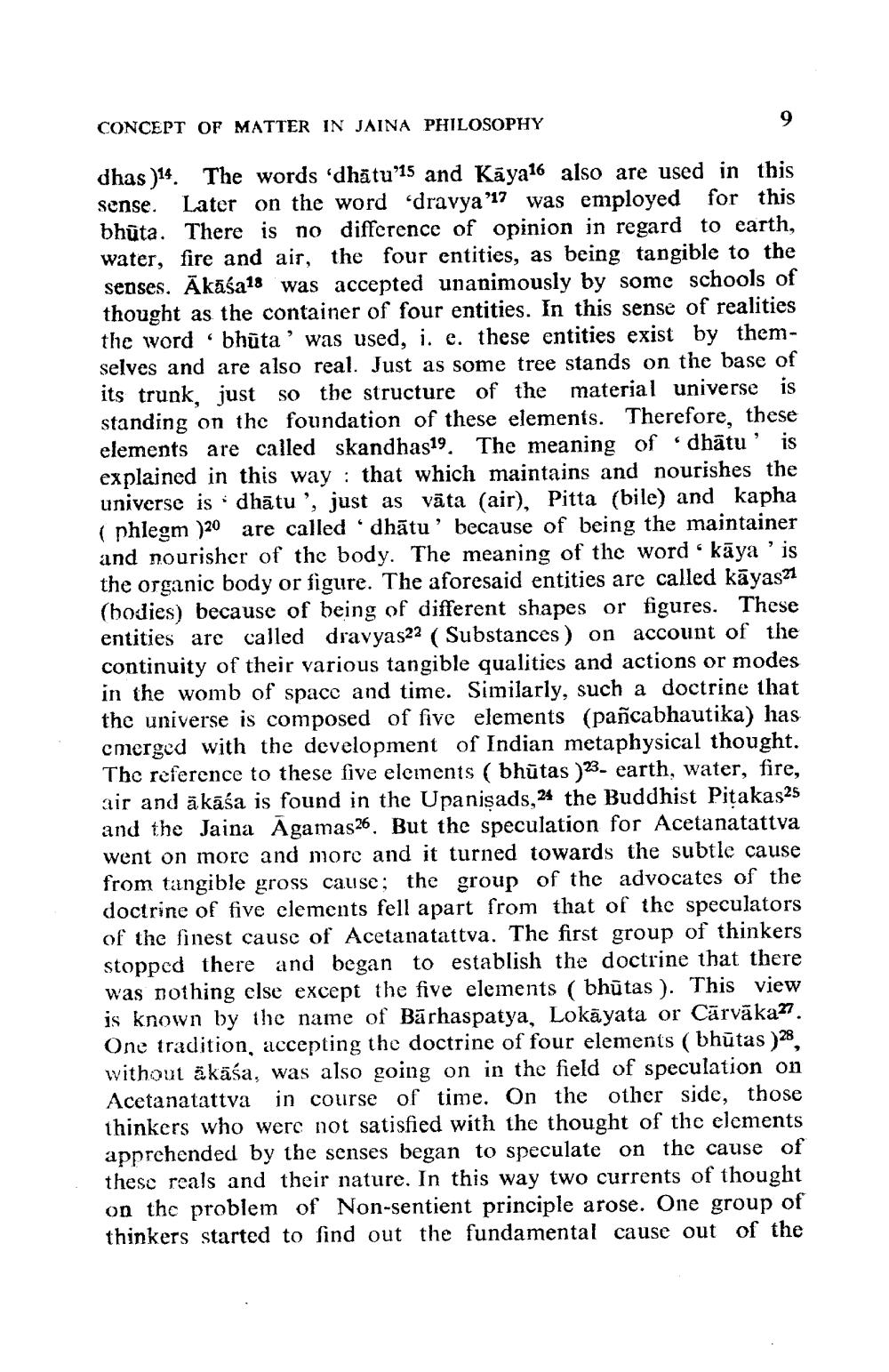________________
CONCEPT OF MATTER IN JAINA PHILOSOPHY
dhas )14. The words 'dhātu’15 and Kāya16 also are used in this sense. Later on the word 'dravya'17 was employed for this bhūta. There is no difference of opinion in regard to earth, water, fire and air, the four entities, as being tangible to the senses. Ākāśa18 was accepted unanimously by some schools of thought as the container of four entities. In this sense of realities the word bhūta' was used, i. e. these entities exist by themselves and are also real. Just as some tree stands on the base of its trunk, just so the structure of the material universe is standing on the foundation of these elements. Therefore, these elements are called skandhas19. The meaning of dhātu' is explained in this way : that which maintains and nourishes the universe is dhātu', just as vāta (air). Pitta (bile) and kapha ( phlegm )20 are called 'dhātu' because of being the maintainer and nourisher of the body. The meaning of the word kāya 'is the organic body or figure. The aforesaid entities are called kāyas21 (bodies) because of being of different shapes or figures. These entities are called dravyas22 ( Substances) on account of the continuity of their various tangible qualities and actions or modes in the womb of space and time. Similarly, such a doctrine that the universe is composed of five elements (pañcabhautika) has cmerged with the development of Indian metaphysical thought. The reference to these five elements ( bhūtas ) 23. earth, water, fire, air and äkāśa is found in the Upanisads, 24 the Buddhist Pitakas25 and the Jaina Agamas26. But the speculation for Acetanatattva went on more and more and it turned towards the subtle cause
ible gross cause; the group of the advocates of the doctrine of five elements fell apart from that of the speculators of the finest cause of Acetanatattva. The first group of thinkers stopped there and began to establish the doctrine that there was nothing else except the five elements ( bhūtas ). This view is known by the name of Bärhaspatya. Lokāyata or Cärvāka?. One tradition, accepting the doctrine of four elements ( bhūtas ) 28, without äkäsa, was also going on in the field of speculation on Acetanatattva in course of time. On the other side, those thinkers who were not satisfied with the thought of the elements apprehended by the senses began to speculate on the cause of these reals and their nature. In this way two currents of thought on the problem of Non-sentient principle arose. One group of thinkers started to find out the fundamental cause out of the




